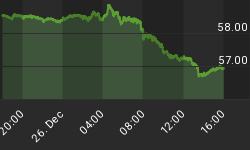Unfortunately every credit fuelled boom ends in recession. Although no one can really predict the actual timing of a recession one can look out for certain danger signals, the major one being manufacturing. Once manufacturing finds itself in a profits squeeze rising costs start to bite into profit margins it will have no choice but to discharge labour, cut back on investment and reduce output. After a while the manufacturing contraction will reach down into the consumption stages of production, at which point it will be officially declared that the economy has tanked.
(I am assuming, of course, that the Fed does not let loose with the money supply in an effort to bolster manufacturing output and investment. This is precisely what the Reserve Bank of Australia did in 2000).
Readers should not be tempted into thinking that because manufacturing is shedding jobs that this will immediately raise unemployment level. Throughout 2000 aggregate unemployment even though manufacturing had shed a considerable number of jobs. This situation confused the economic commentariat who came to believe that a condition of being half-pregnant was indeed possible. This caused Steve Slifer, chief economist at Lehman Brothers, to say of the US economy in January 2001:
It's really an odd-looking slowdown. The manufacturing sector is, in fact, in a recession but not the overall economy. At least not yet.
But in fact there was nothing odd about it all. If Slifer had applied the production structure approach to the his dilemma would have disappeared very quickly. What really happened is that consumer spending continued to expand and in doing so it generated more jobs. This is why the unemployment rate continued to fall in the face of a decline in demand for labour from manufacturing. The economic commentariat naturally interpreted the situation as vindicating the vital role that consumer spending is alleged to have played in bringing about a "soft landing". In fact, consumer spending continued to grow throughout the recession, raising an interesting question: If consumer spending is as important as the vast majority of economists claim, why did the US economy sink into recession?
The answer is simple: consumer spending is not and never has been an engine of economic growth. This is one of the great economic fallacies of the age. GDP is a value-added approach that by definition omits from its accounts spending on intermediate goods. (How highly intelligent economists insist that value-added accounting gives a gross figure has always been something of a mystery to me). Fortunately the US Bureau of Economic Analysis have arrived at a similar conclusion. It now produces a national income statistic it calls gross output which is supposed to include spending on all intermediate goods.
The results has been very instructive: the Bureau's December 2006 release for gross output revealed that spending for all industries was $22.857 trillion against a GDP of about $13 trillion. Considering that consumer spending is something like 66 per cent to 70 per cent of GDP, this must mean that business spending was in the region of $13-$14 trillion as against about $9 trillion for consumption.
We can deduce from this that the GDP method of accounting conceals enormous fluctuations in business spending. Once we take this into account we find that the drop in economic activity was greatly understated by the GDP figures. It now follows that manufacturing is not only a key indicator in trying to plot the course of boom it is also a good measure of just how deep a recession is. Unfortunately the great number of economists are not likely to abandon their GDP, even in the face of the figures produced by the US Bureau of Economic Analysis.
We must never lose sight of a fundamental fact: booms are always triggered by 'cheap money' policies. By forcing down the market rate of interest the Fed creates a flood of credit that creates malinvestments, causes so-called balance-of-payments problems, housing booms and share market booms. Needless to say, the debt burden begins to grow. As Richard von Strigl put it:
The more credit expansion progresses, the greater will become the share of additional credits in the overall volume of credits within the economy, while savings capital gradually loses its relative importance. (Capital and Production, Mises Institute, 2000, first published 1934, p. 126).
In other words, the huge debt has been produced by the Fed's monetary policies. And as for predicting actually timing of the recession, we just need to look out for those tell-tale signs, while exercising due caution.
















